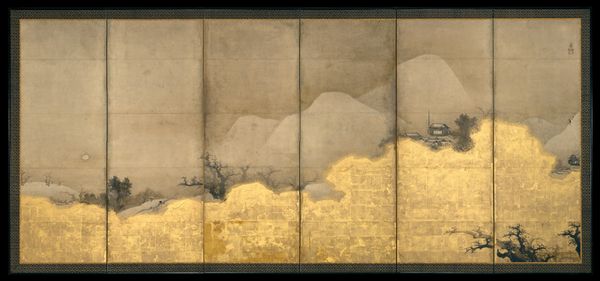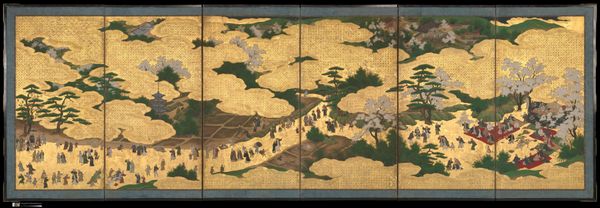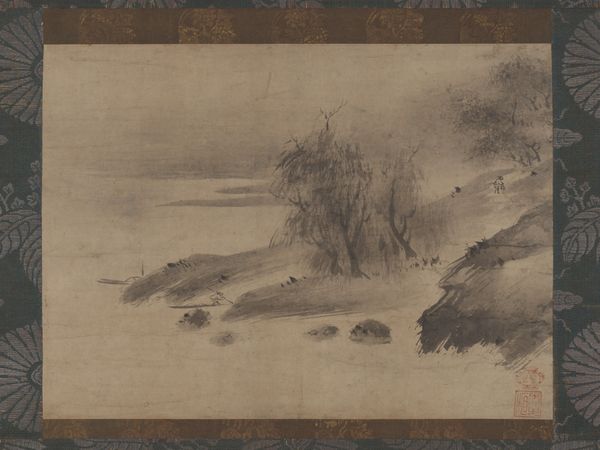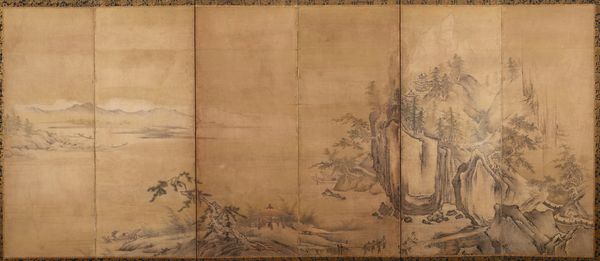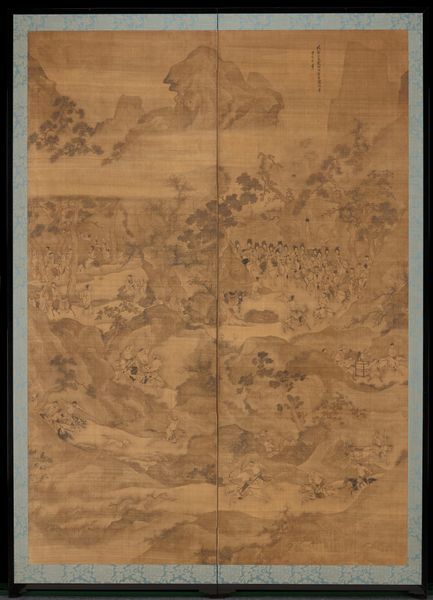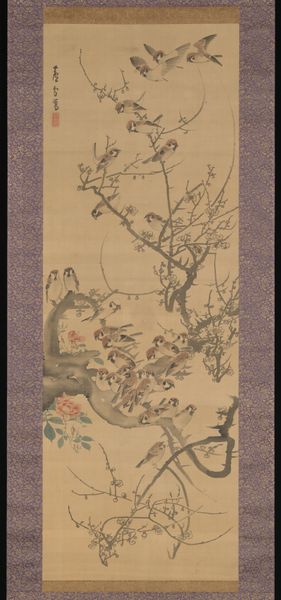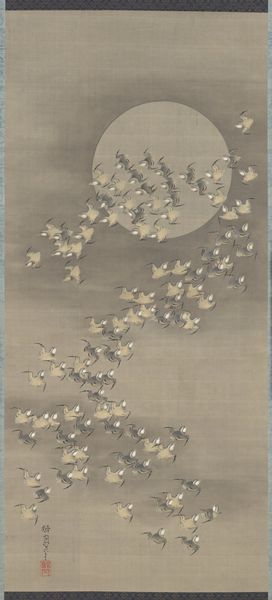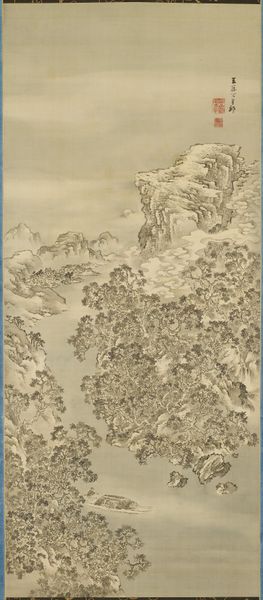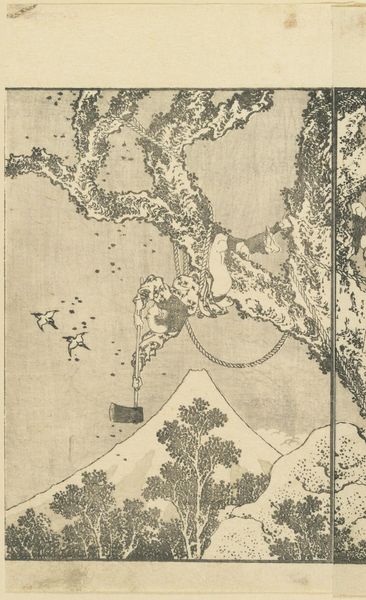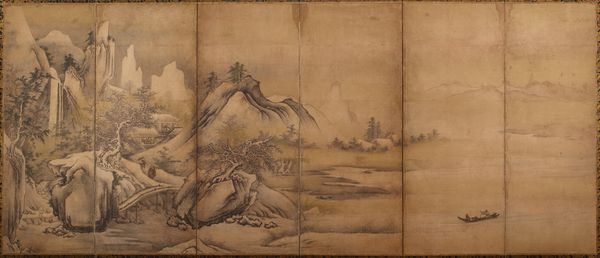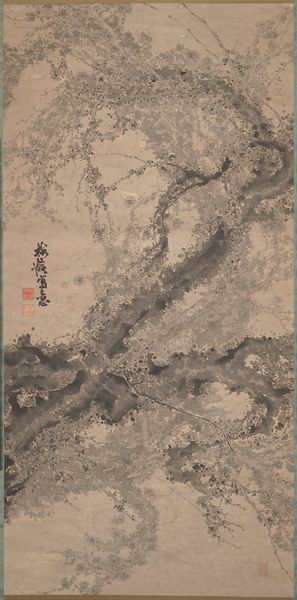
painting, ink
#
ink painting
#
painting
#
asian-art
#
landscape
#
japan
#
ink
#
coloured pencil
#
line
Dimensions: 47 3/4 × 105 5/8 in. (121.29 × 268.29 cm) (image)54 × 111 13/16 × 11/16 in. (137.16 × 284 × 1.75 cm) (mount)
Copyright: Public Domain
Ki Baitei created this folding screen, known as a byōbu, using ink and color on paper, sometime in the 18th century. Notice how the plum tree seems to grow across the panels. This effect relies on the material characteristics of paper, which is light and flexible enough to be configured in this way. Screens like this one were not just paintings but functional objects, used to divide spaces and provide backdrops for important events. Their production involved numerous artisans, from the papermakers to the painters and the carpenters who built the frames. The shimmering effect of the ink on the paper is carefully controlled, requiring a mastery of brushwork and an understanding of how the ink would interact with the absorbent surface. In Japanese culture, the plum blossom is a symbol of resilience and renewal, often associated with the coming of spring. But in this context, it is also an expression of sophisticated artistry, one deeply rooted in material knowledge and craft tradition. It reminds us that art is always the product of skilled labor, bridging the conceptual and the material.
Comments
No comments
Be the first to comment and join the conversation on the ultimate creative platform.
